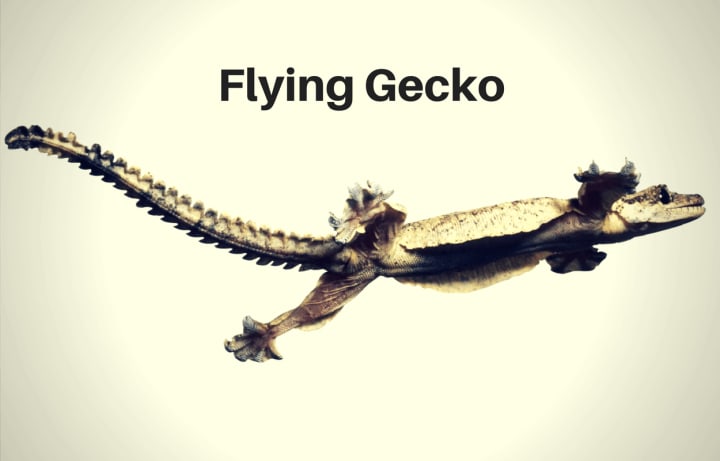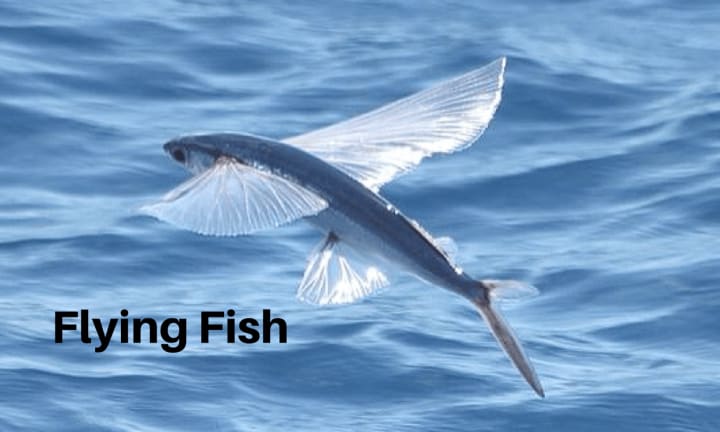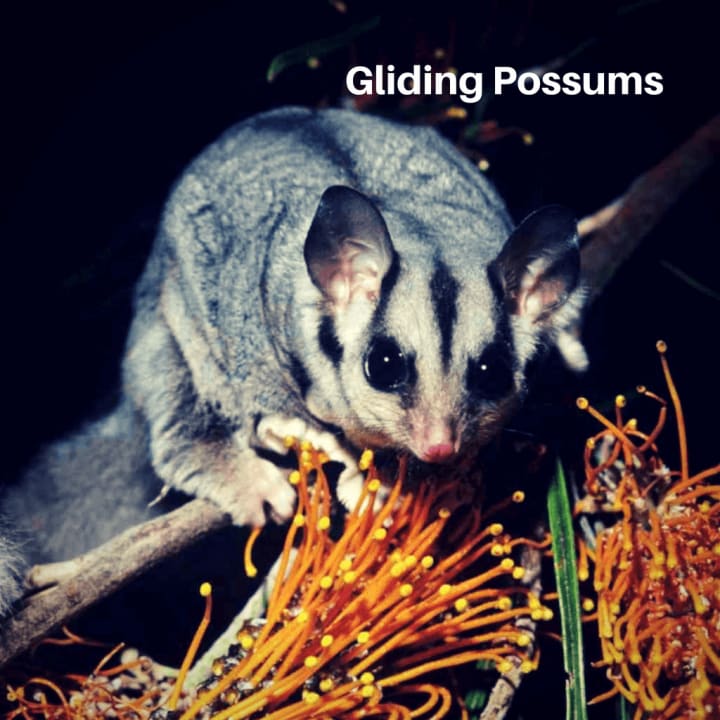Top 10 Strangest Flying Animals That Are Not Birds
Things You Might Not Have Known

The world is full of amazing animals that have never failed to stun the mankind. Amongst them, the ones that have always managed to catch the attention of the observers/researchers are the flying animals! These animals may not have wings like birds, but their aerodynamic structures provide them the ability to fly. Here are the top ten strangest flying animals that are not birds.
1) Flying Squirrel

Scientifically popular as Pteromyini, this squirrel belongs to one of the 43 species found. It is said to be a native to North America, Siberia, and northern Europe. When it leaps from trees, it looks as if a hamster has been ironed out, as the membranes from the hind limbs to forelimbs get completely stretched out. These animals are said to be the world record holders in the gliding animals category and are known to reach a distance of 288 feet in just a single jump. They steer their flight using their wrists and have furry patagium. These squirrels are good escape artists, are omnivores, nocturnal, and are quick in scurrying to the other side of the tree branch to avoid probable predators.
2) Colugo

Popular as the flying lemur, it is a primitive gliding mammal species found only in Southeast Asia and some places in the Philippines island. These animals belong to the family of Cynocephalidae, which reflects that they are neither actual lemurs, nor do they fly. They are mammals that have adapted to flight due to their limbs connected with the tails, which make them better gliders. These animals are even webbed between their toes and are bad climbers. The flying lemurs can easily maneuver their flight and can reach up to a height of 3,230 feet without losing any altitude.
3) Japanese Flying Squid

This eight-armed and two-tentacled cephalopod is native to the regions along the Pacific coast and is famous for its ability to leap out of the water and covering considerable distances. The squid often uses its uncommon ability to save itself from predators during the mating migrations as well as to conserve energy. These squids are known to fly more than 30 meters in just three seconds and can travel long distances in a blink of an eye. They usually inhabit the top layer of the water body which gives them an easier access to the open air. These creatures are known to have three hearts. They often shoot ink at predators for self-protection.
4) Mobula Ray

These creatures are closely related to sharks, and their body structure, including long, flat bodies along with pectoral fins, give them an ideal lift to launch themselves above the ocean surface. They are around 17 feet across and weigh nearly a ton, yet can jump about six and a half feet in the air above the water. They can be found in warm oceans across the world and are renowned swimmers. The rays tend to move together in a group, and you might notice a hundred of them, especially when they are feeding. The new-born rays, called pups, immediately unfold their fins and swim off with poise proving that they are natural gliders.
5) Flying Snakes

Chrysopelea, more commonly known as the flying snake belongs to the Colubridae family and lives in the rainforests of Southeast Asia. Though scientists have not been able to decode why these legless reptiles fly, it is assumed that they move from one tree to another to escape from predators. It has been proved after thorough research that these snakes flatten themselves during the launch and undulate side to side as if they are slithering in the mid-air. These snakes are fast movers and are said to glide over eight to ten meters per second. They are mildly poisonous, but they are not dangerous to humans.
6) Flying Gecko

Ptychozoon Kuhli, commonly known as the flying gecko or flying lizard, is found in the Malaysian rainforest and is usually six to eight inches long. It is found in colors like brown, black, or beige. The dusky color and the cryptic skin help them to disappear as they get easily camouflaged with the environment. Even though these lizards are not a pro at flying as compared to the other strangest animals, they can passively glide from one tree to another. The lizards are popular as excellent gliders and use their extendable wings which have been elongated from the rib bones. The gecko usually moves on trees and seldom comes to the ground. People have even started keeping them as pets.
7) Flying Fish

According to the available data, there are 40 species of flying fish, which can be seen in Atlantic and Pacific oceans of the United States. Not only do these fishes have pectoral fins, but also have an unevenly forked tail, which assists them in gliding. Before the fish pushes itself in the air, it accelerates the velocity at the speed of 37 miles per hour under the water. Before breaking through the water surface, it just starts beating its tail rapidly and then reaches great heights, sometimes up to over four feet. The record for a sustained glide by a flying fish is said to be over 1,300 feet at the speed of 42 miles per hour.
8) Flying Frog

Rhacophorus nigropalmatus or simple Wallace's flying frog is an amphibian, mostly found in Malaysia and Indonesia where it lives on the treetops. These animals developed their flying abilities over a period to escape becoming a meal of the predators. They have long webbed toes and limbs with skin flaps, which allow it to glide easily to the ground. As compared to others, the flying frog jumps towards the land, whereas the other animals tend to move in a certain direction or stay up in the air for a certain period. They are usually bright green with yellow sides and tend to grow up to four inches.
9) Ballooning Spiders

Ballooning spiders are more exciting than the jumping spiders, and they can travel thousands of miles through the air. For instance, crab spiders use the ballooning technique to fly over large distances. It uses the wind to travel to distances. It goes to the topmost point of a rock or a plant and then waits for the wind. Once it feels the air current, it shoots a jet of gossamer, the silk-type material that is used to create a web. They are large enough to act as a parachute or a balloon, and thus help the spiders to move from one point to another. The world record for spider ballooning and flying without food has been recorded for 25 days, and they can fly up to the height of two feet above ground.
10) Gliding Possums

Commonly called as flying phalangers, these are Australia's flying marsupials which come from the subfamily of possums, and are almost similar to the flying squirrels. It has a gliding membrane which spreads between its forepaws and ankles, which assist during the flight. In this, the pygmy glider or feathertail is just six inches in length, the 25 cm pen tailed phalanger does not have the flaps whereas the sugar glider is around 25 to 80 cm long. They have a thin membrane skin known as patagium, which permits them to travel a distance of 100 meters in one swoop. These gliders are usually found in the eucalyptus forests.
These animals have found out a novel way of covering distance as compared to the common method. The reasons could vary right from finding a new place to live or protect themselves from the predators. Finally, they have always managed to stun the humans and rightly proved the point that it is the survival of the fittest in this ever-changing environment.






Comments
There are no comments for this story
Be the first to respond and start the conversation.